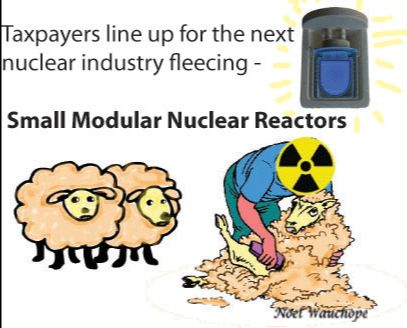
The face-lift the nuclear industry is currently receiving is not new or surprising. Since the golden age of the peacetime atom back in the 1960s-1970s, when nuclear was heralded as the “energy source to light the future,” there has been a steady decline in public support or interest in the industry. This phenomenon can largely be attributed to several incidents (Chernobyl, Three Mile Island, and Fukushima) and increasing costs and delays in nuclear production. However, this has not stopped the nuclear sector from pushing for a resurgence. “With decarbonization, advocates see a bright future for nuclear after decades of dormancy,” authored by Robert Zullo at the Idaho Capital Sun, looks to explore the workings of future nuclear power.
Idaho’s National Laboratory (INL) has been working hard to bring nuclear energy into the modern age through the production of the MARVEL reactor. The stumbling point within the piece is the repeated mention of “carbon-free” energy. Specifically, this quote from INL engineer Yasir Arafat, “Think about one energy source that can give you 24/7 reliable carbon-free electricity on demand regardless of geographical location — that’s nuclear”. While the electricity produced by the reactor is carbon-free once it is up and running, statements like this fail to take into account the emissions produced by plant construction and maintenance efforts. This does not even consider the nuclear industry’s notorious delay in construction and launch deadlines.
The nuclear industry has not provided accurate or transparent information to support greenhouse gas emission claims, and there are few studies available that look at the emissions rate for reactors over their life cycle. World Information Service on Energy (WISE), based in Amsterdam, published a study in 2017 about the emissions released during the nuclear power plant life cycle. The study cited 90-150 grams of CO2 per kilowatt hour, substantially higher than previously sourced industry numbers. The industry-cited emissions numbers often discount the greenhouse gasses (GHG) produced during “the construction, operation, maintenance, refurbishment, and dismantling processes, which account for 70% of generated emissions by nuclear plants” (6, WISE). These values would put nuclear emissions far beyond those from wind, solar, and hydropower. These numbers are often neglected because it makes the premise of nuclear being the net-zero savior much less feasible for the industry to peddle.

Nuscale and Utah Associated Municipal Power Systems (UAMPS) have also been leading the way in attempting to create the first functional SMR. The “Carbon Free Power Project” (CFPP) from UAMPS will be based at Idaho National Laboratory and is already substantially over budget. CFPP was initially slated for 5 billion dollars in construction costs but has grown to an estimated $9.3 billion, approximately a 75% increase in expected costs. The large gap in funding will be bridged with hefty governmental aid, about $4.2 billion, provided by the Biden administration’s Inflation Reduction Act.
We must promote authentic renewable, carbon-free energy sources and combat energy misinformation to move forward with energy innovation and protect our future. Americans deserve access to energy sources that provide transparent, safe, equitable, just, and sustainable power. Nuclear energy cannot meet these goals.
